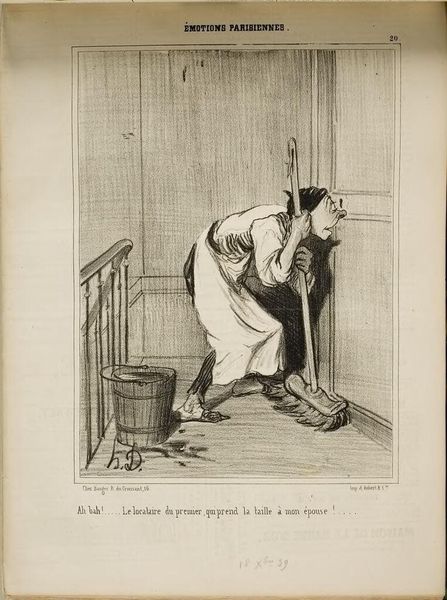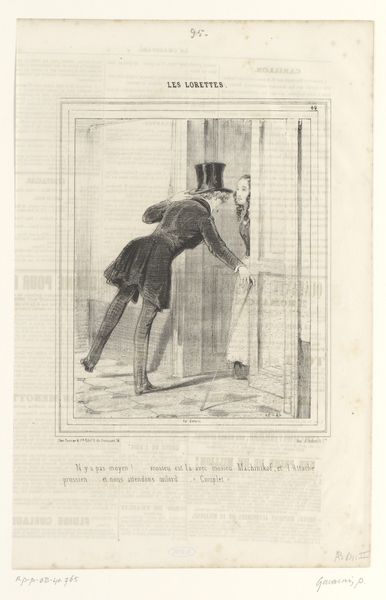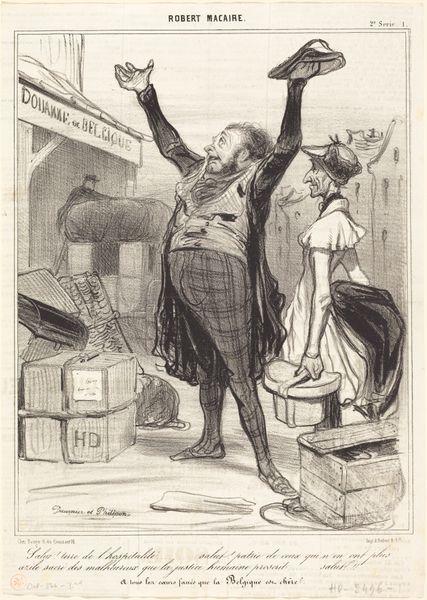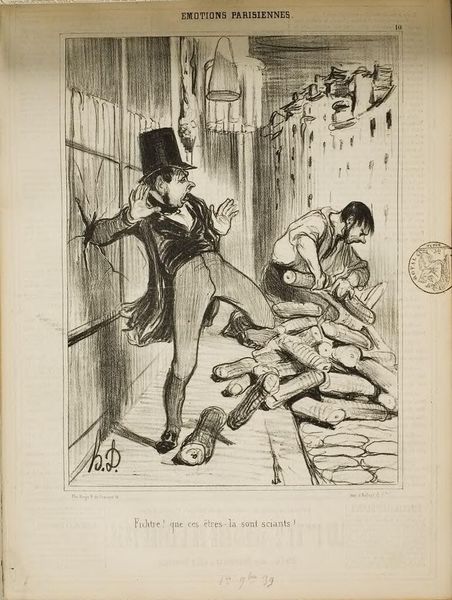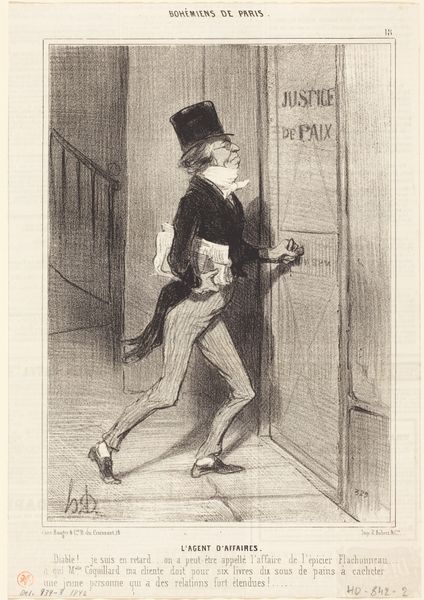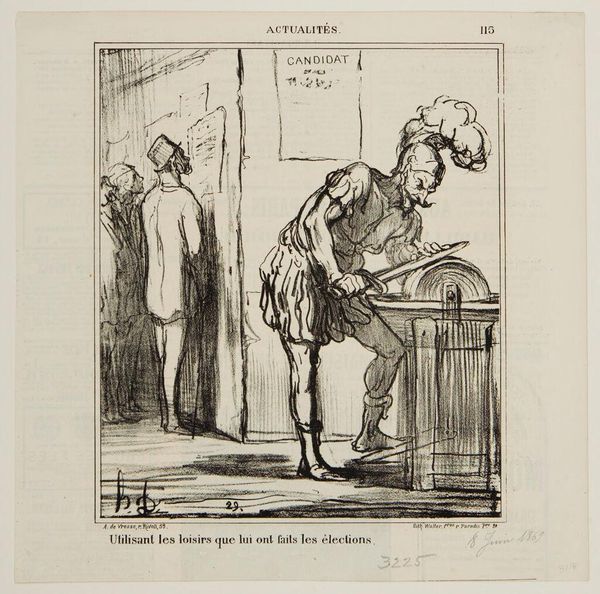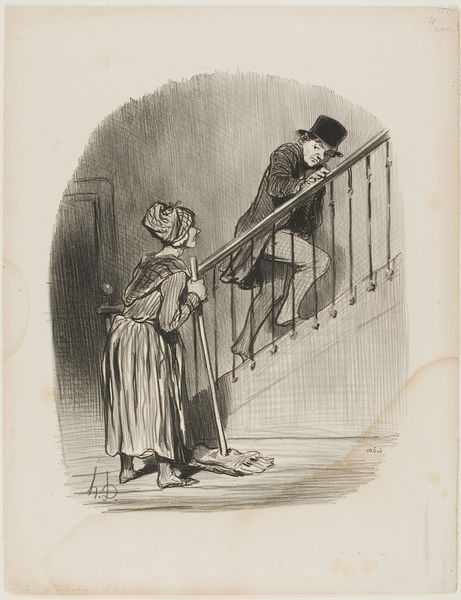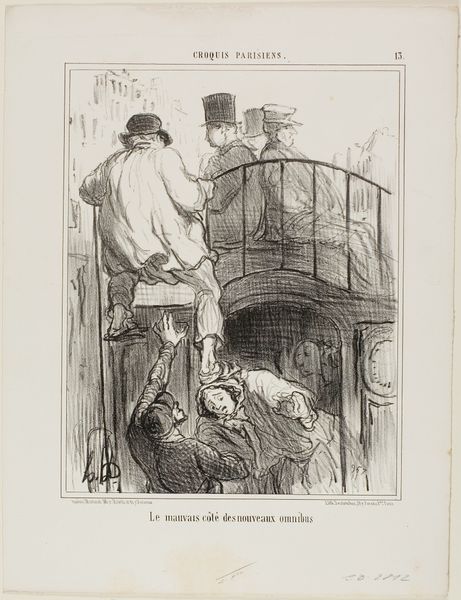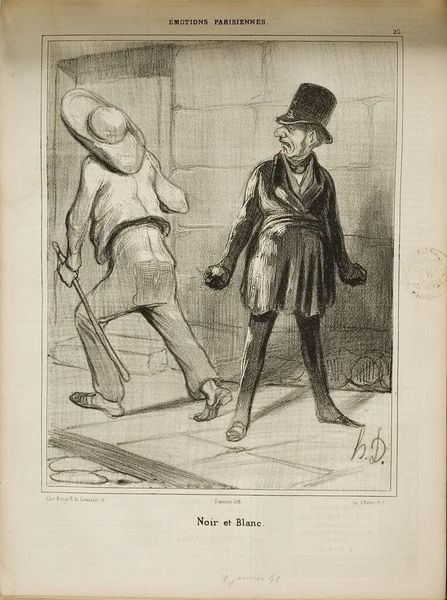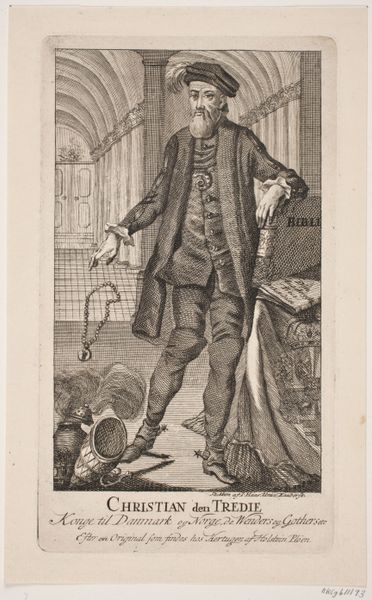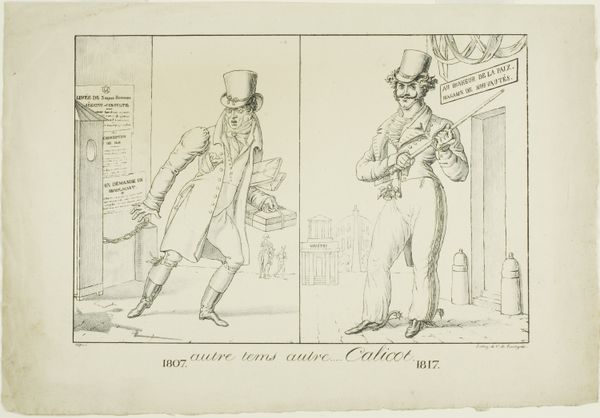
Mr. Dupin in His Little Shoes. Once Mr. Dupin noticed that one started a heated discussion about the reform of the election laws, he considered it the right moment to show himself at Clamecy, plate 123 from Actualités 1850
0:00
0:00
drawing, lithograph, print, paper
#
drawing
#
quirky sketch
#
lithograph
# print
#
pencil sketch
#
paper
#
personal sketchbook
#
idea generation sketch
#
sketchwork
#
ink drawing experimentation
#
pen-ink sketch
#
france
#
sketchbook drawing
#
storyboard and sketchbook work
#
sketchbook art
Dimensions: 248 × 211 mm (image); 349 × 256 mm (sheet)
Copyright: Public Domain
Curator: So, here we have Honoré Daumier's lithograph from 1850, titled "Mr. Dupin in His Little Shoes. Once Mr. Dupin noticed that one started a heated discussion about the reform of the election laws, he considered it the right moment to show himself at Clamecy, plate 123 from Actualités.” Editor: It's fascinating! I'm immediately struck by how Daumier contrasts the exaggerated figure with the precise lithographic technique. What does that contrast signify? Curator: Well, think about lithography itself as a commercial printing process, used for mass production in newspapers. How does Daumier utilize that production method to critique the very figures depicted? Consider Mr. Dupin. He's caricatured, seemingly important yet rendered absurd through exaggeration and placed within this easily reproducible image. Editor: It feels like the medium itself, the lithograph, is part of the statement, amplifying the satire through its accessibility. Is he commenting on the cheapening of political discourse, maybe? Curator: Exactly. The print medium democratizes the critique, making it available to a wide audience. But look closer. Consider the labor involved in producing a lithograph – the grinding of the stone, the drawing, the printing itself. What's being produced? An image meant to satirize someone aiming at reforming *election* laws! There's inherent political engagement in that tension. Editor: So, it is less about aesthetic beauty and more about its function, production, and consumption in the political sphere? Curator: Precisely. Think of it: an artistic rendering of this person disseminated widely; and, for all of its reach and the political nature of the subject, the medium in the end it’s just humble paper. How does it make you think about contemporary forms of protest like memes and social media images? Editor: That makes total sense. I see it as a powerful early example of using accessible media for political commentary, the very materiality adding another layer to its meaning. Thanks! Curator: Absolutely. Reflecting on the piece in light of the production process and social context enriches our understanding considerably.
Comments
No comments
Be the first to comment and join the conversation on the ultimate creative platform.
